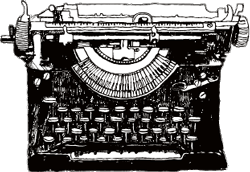Interactive
After reading Hayles' introduction to electronic literature, I found myself comparing and contrasting the differences between traditional literature and electronic literature. Traditional literature has the typical plot where the reader follows, but with electronic literature, I find it most intriguing that the reader is able to create their own story within the author's story in interactive fiction. The author usually has the pen and is writing the story, but with electronic media, there gives more of a possibility for a plethora of different variations of stories for each character. Having a say in the storyline, "hypertext is synonymous with democracy and user empowerment" (Hayles). To have a voice brings more enjoyment to a reader overall, and it keeps engagement high as well as retainment. If a reader has a role in the story itself, they build a stronger connection that allows them to continue on. Interactive fiction allows the interactor to step into the character's shoes virtually instead of imagining in their minds, and that's what makes it so special and unique. It's an experience and connection that did not exist before with traditional literature, and now with this comes more creative outlets for literature. The evolution of interactive fiction continues as new technology is invented each day, and with new forms of literature comes a more integrated way of reading as society changes.
"The alleged typewriter hipster later turned out to be a writer who earned his livelihood by selling custom-written stories from a bench in the park." - Cramer (x7tu7ps^)
